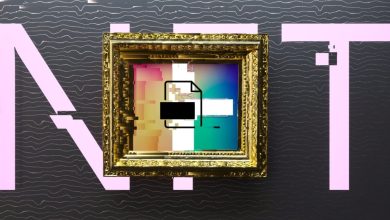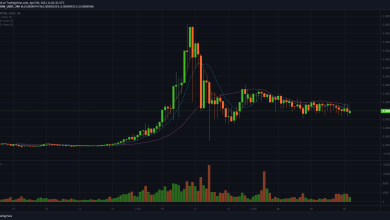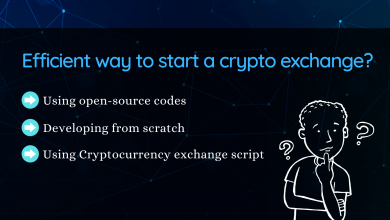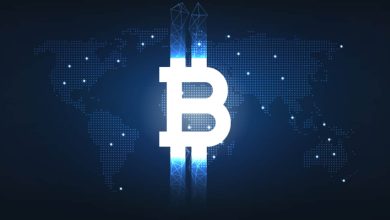White-label NFT Marketplace – Offer more revenue for artists by procuring a White-label NFT Trading Platform

Is there anything bigger than crypto collectibles at the moment? The numbers speak for themselves. Digital collectibles have a market capitalization of $28.43 billion along with a daily trading volume of $12.22 billion as per CoinMarketCap. Where are all these NFTs bought and sold? Blockchain-based platforms take care of auctions, bids, the listing of assets, minting, and processing of transactions. Hence, entrepreneurs can disrupt the thriving crypto world by launch a White-label NFT Marketplace.
Why choose a White-label NFT Marketplace?
It is a customized marketplace packed with eye-catching features and functionalities. The White-label NFT marketplace acts as a one-stop destination for artists, fashion designers, game developers, meme creators, musicians, photographers, publishers, and software developers. Innovative content creators can display their work in the form of (audio, GIFs, images, and videos).
Cryptopreneurs need not incur huge investments nor waste precious time in creating their NFT trading platform from scratch. They can collaborate with a talented app development company and deploy it within just a few days or weeks.
What are the advantages for entrepreneurs when they launch NFT Marketplace?
Consistent inflow of revenue
Cryptopreneurs can mint unlimited income by operating a white-label NFT marketplace. They will earn auction fees, bidding charges, a commission on every primary sale of a collectible, gas fees, listing charges, minting fees, and transaction processing charges.
Development of a brand image
Crypto collectibles are dominating several industries now. For instance, NBA Top Shot (basketball) and Sorare (football) have become the hub of sports-based NFTs. Likewise, Axie Infinity, CryptoKitties, and Gods Unchained have emerged as popular choices for video gamers. They earn exciting prizes by participating in different contests and tournaments.
Accordingly, the sales and trading volume of these NFT marketplaces have skyrocketed. This has uplifted their brand value to a great extent.
Easy expansion opportunities
For example, NFT marketplaces like MakersPlace, OpenSea and Rarible are raising millions of dollars in funding from venture capitalists (VCs). Therefore, this helps them in expanding their business scope to new countries. They can attract more artists, introduce new features to their platform, and reduce transaction fees by using another blockchain network.
What are the various asset standards compatible with a NFT Trading Platform?
BEP-721
It refers to Non-Fungible Tokens (NFTs) created on the Binance Smart Chain (BSC) blockchain network. The BEP-721 standard also syncs efficiently with the Ethereum Virtual Machine (EVM). Content creators can tokenize the ownership of their data by using BEP-721. Generally, investors can purchase BEP-721 crypto collectibles in the form of digital artwork, lottery tickets, trading cards, and virtual real estate.
BEP-1155
Similar to ERC-1155 on the Ethereum blockchain, BEP-1155 represents the multi-token standard of the Binance Smart Chain (BSC). An app development company creates the BEP-1155 digital collectibles using tools like Chainstack, OpenZeppelin and Truffle.
Investors can store their NFTs in Binance Chain Wallet and Trust Wallet. BEP-1155 includes the supply of both fungible and non-fungible tokens. Each smart contract on the Binance Smart Chain (BSC) consists of a JavaScript Object Notation (JSON). This helps in real-time location tracking of the metadata of the NFTs.
ERC-721
It is the fundamental standard for crypto collectibles. ERC-721 assets are created based on guidelines issued by the Ethereum blockchain network. Each NFT possesses a unique Token ID, Token pair contract address, and total supply. Users can easily transfer crypto collectibles between two accounts and also know their balance.
ERC-1155
The scope of ERC-1155 assets is broader when compared to ERC-721. It is nicknamed the Multi-Token Standard. All the NFTs have one-of-the-kind metadata and total supply.
The key benefit of ERC-1155 is that investors can transfer several digital collectibles simultaneously. Thus, it decreases transaction costs significantly. Moreover, the ERC-1155 standard permits the atomic swapping of digital assets. Hence, it saves time as there is no need to separately approve each token contract.
TRC-721
All the NFTs issued on the TRON blockchain network follow the TRC-721 standard. The user interface of TRC-165 helps in creating TRC-721. Importantly, it is completely compatible with the ERC-721 asset standard. The biggest advantage of TRC-721 digital collectibles is that the smart contracts have an optional metadata extension.
The impressive features of a NFT Marketplace solution
Auction Hosting section – For instance, the OpenSea NFT trading platform allows content creators to organize 2 types of auctions. They can choose either Dutch or English auction as per their requirements.
Filter and sort option – There are more than 1 million crypto collectibles in the world as per the CoinRanking portal. Hence, investors must pick the right NFT to maximize their returns. Importantly, they can tap the Filter and Sort mechanism and discover digital collectibles based on (Cheapest and Highest price, Most liked collections, and Recently Added).
Multi-layer security measures – The White-label NFT trading platform acts as a fortress against hacking and phishing attacks. Both content creators and investors benefit from security steps like email verification, end-to-end data encryption, multi-factor authentication, and Secure Sockets Layer (SSL).
Sharing of real-time notifications – Investors receive real-time updates via email or push notifications. They get information about the launch of new NFTs, live auctions, top sellers, and trending collections.
Social media login facility – New artists can directly register on a White-label NFT marketplace. They can sync their Discord, Facebook, Google, Instagram, and Twitter accounts.
Support for several digital wallets – The Rarible NFT marketplace provides integration with numerous software wallets. Generally, investors can back up their crypto collectibles on Coinbase Wallet, Fortmatic, MetaMask, MyEtherWallet (MEW), Portis, Trust Wallet, Torus, and WalletConnect.
What is the cost to Launch White-label NFT Marketplace?
An app development company considers numerous factors while creating an NFT trading platform. The total cost depends on aspects like the choice of features, legal compliance, the kind of technology stack used, the nature of the blockchain network, salaries paid to the front-end and back-end developers, and the time allotted.
Wrapping Up
Above all, this is the right time for entrepreneurs to explore the infinite possibilities offered by Non-Fungible Tokens (NFTs). It has connected art collectors directly with content creators. Currently, the frenzy of crypto collectibles is denoted by terms like “Play to Earn”, “Record-Breaking Sales” and “Six-Digit Figures”. Hence, cryptopreneurs can join this exciting space by purchasing a wonderful White-label NFT marketplace.




